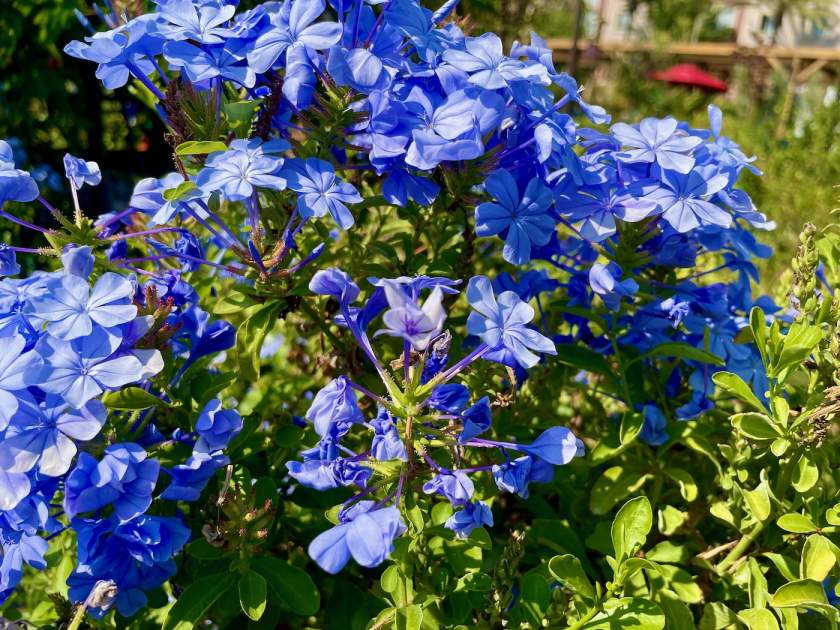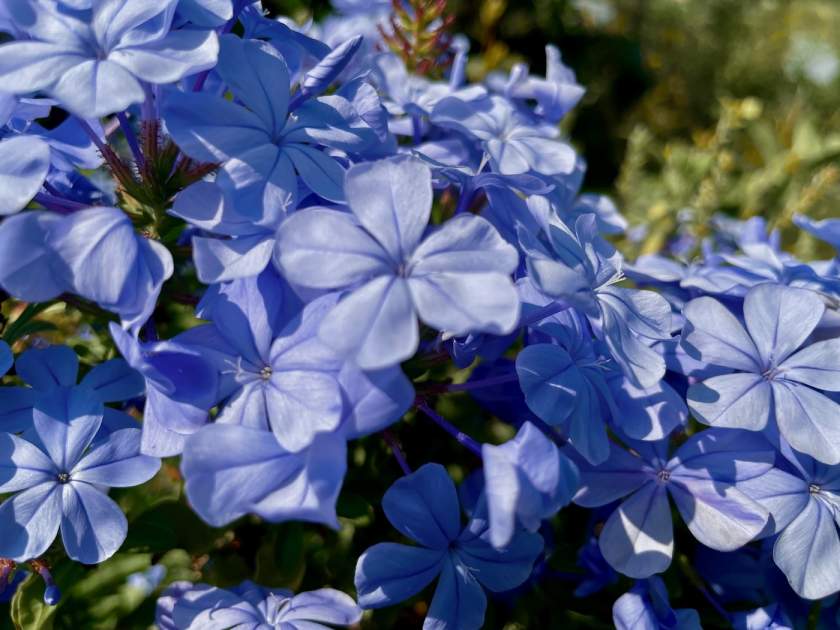Royal Cape® Plumbago: Vibrant Blue Blooms and Evergreen Beauty
The Royal Cape Plumbago, scientifically known as Plumbago auriculata ‘Monott’, or Plumbago auriculata ‘Royal Cape’, belongs to the family Plumbaginaceae and it is a stunning vine-like shrub that enchants with its clusters of vivid deep blue flowers. This evergreen plant provides reliable color throughout the year, making it a versatile choice for various garden settings.
Whether used as a ground cover, bank cover, or container plant, the Royal Cape® Plumbago adds a touch of elegance and charm to any landscape. In this article, we will explore the characteristics and cultivation tips for the Royal Cape® Plumbago, offering valuable insights for gardeners looking to incorporate this captivating shrub into their outdoor spaces.
Characteristics: The Royal Cape® Plumbago is adorned with huge clusters of vivid deep blue flowers that create a breathtaking display. The flowers bloom abundantly from spring through fall, ensuring continuous beauty in the garden. As an evergreen plant, it provides year-round interest and color, even in frost-free areas where it can be grown as a sprawling groundcover or bank cover. In colder zones, it offers the opportunity to enjoy its stunning annual color.
Cultivation of Royal Cape Plumbago:
Sunlight: The Royal Cape Plumbago thrives in full sun. It requires at least 6 hours of direct sunlight per day to ensure optimal growth and abundant blooms. Planting it in a location with ample sunlight will help promote vigorous growth and vibrant flower production.
Watering: Water the Royal Cape Plumbago when the top 2 inches of soil become dry. While it prefers slightly acidic, well-drained soils, it is highly adaptable and can tolerate a range of soil conditions. Water deeply and regularly during the first growing season to establish a robust root system. Once established, reduce the frequency of watering, allowing the soil to partially dry out between waterings.
Soil: The Royal Cape Plumbago prefers light, well-drained soils. However, it is highly adaptable and can thrive in a variety of soil types. If the soil tends to be heavy or clay-like, amending it with organic matter such as compost or well-rotted manure can improve drainage and overall soil quality.
Pest and Disease Control: The Royal Cape Plumbago is generally resistant to pests and diseases. However, it may occasionally attract common garden pests such as aphids or whiteflies. Regularly inspect the plant for any signs of infestation and treat accordingly with appropriate insecticidal soap or horticultural oil. Providing good air circulation around the plant and avoiding overwatering can help prevent the onset of fungal diseases.
Propagation:
The Royal Cape Plumbago can be propagated through stem cuttings. Take 4 to 6-inch stem cuttings from a healthy plant, ensuring they have several sets of leaves. Remove the lower leaves and dip the cut end in a rooting hormone. Plant the cuttings in a well-draining potting mix and place them in a warm, humid environment. Keep the soil consistently moist until roots develop, which usually takes several weeks. Once rooted, the cuttings can be transplanted into larger containers or directly into the garden.
By following these cultivation and propagation techniques, gardeners can enjoy the vibrant blue blooms and evergreen beauty of the Royal Cape® Plumbago. Its versatility as a ground cover, bank cover, or container plant makes it a valuable addition to any garden. With its captivating flowers and reliable color, the Royal Cape® Plumbago adds an enchanting touch to outdoor spaces, creating a stunning visual display throughout the year.





